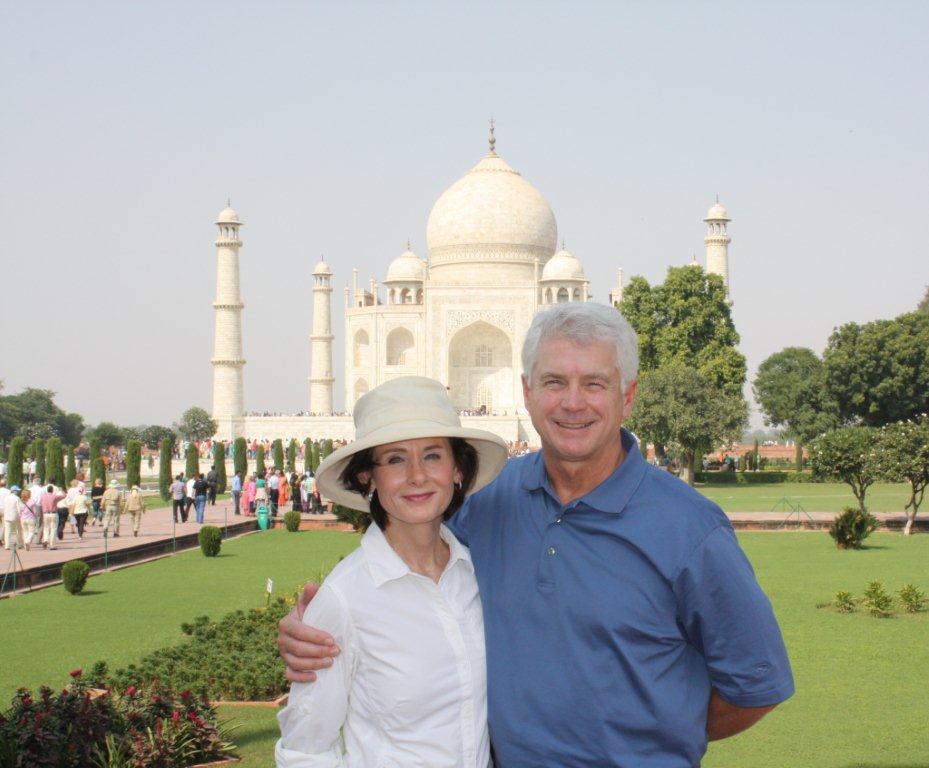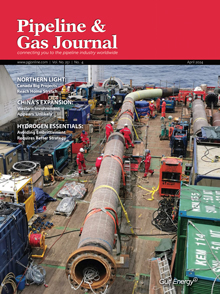December 2011, Vol. 238 No. 12
Features
Dave McCurdy Brings Strong Credentials To AGA

Talk about being the right person at the right place at the right time. For Dave McCurdy and the American Gas Association, it could hardly be a better match.
Now well into his first year as head of AGA, McCurdy, 61, has stepped into a situation filled with opportunity for the natural gas industry, including the nation’s steadily growing distribution sector.
Almost daily, new reports emerge substantiating the dramatic growth of America’s natural gas resource. Though the picture glows brightly for the industry, several key challenges must be met to ensure its continued vitality.
McCurdy, a native Oklahoman, was hired to replace Dave Parker, who retired after 13 years at the helm and was credited with streamlining AGA’s staff to better meet the needs of its members, which now number about 200 U.S. gas distribution utilities.
McCurdy joined AGA after serving four years as president and CEO of the Alliance of Automobile Manufacturers where he helped develop the agreement between automakers and the Obama administration establishing the national program to increase fuel economy by 40% and decrease greenhouse gas emissions by 30% by 2016.
Prior to his work at the Alliance, McCurdy served eight years as president and CEO of the Electronic Industries Alliance, which has 1,300 member companies.
Considered a conservative-to-moderate Democrat, McCurdy spent 14 years (1981-1995) in the U.S. House representing the Fourth Congressional District of Oklahoma. As chairman and CEO of the McCurdy Group, L.L.C., he also led a successful business consulting and investment practice.
In 2008, Secretary of Defense Robert Gates appointed McCurdy to the Defense Policy Board, which provides independent, informed advice and opinion concerning matters of defense policy. McCurdy was reappointed to the Defense Policy Board in 2009 by the Obama administration.
He is a 1972 graduate of the University of Oklahoma and received his J.D. in 1975 from Oklahoma Law School. As a Rotary International Graduate Fellow, he studied international economics at the University of Edinburgh, Scotland. He and his wife, Dr. Pam McCurdy, a physician specializing in child psychiatry, live in McLean, VA. They have three grown children.
“Dave’s impressive background in both the association business and federal advocacy will be invaluable to AGA,” said John Somerhalder, AGA chairman and president and CEO of AGL Resources. “Throughout his career Dave has been a true champion for energy and environmental issues and at AGA he will have the opportunity to lead efforts to develop a viable domestic energy policy with the natural gas industry at the center of the conversation.”
Mindful of recent headlines – in particular the Allentown, PA explosion that killed five people – that have raised serious questions about the safety of the pipeline industry, the well-connected McCurdy talked at length about what the gas industry is doing to improve its safety record, remain profitable, and deal with the burgeoning supply of product being delivered from shale plays around the country.
P&GJ: What is your strategy moving forward?
McCurdy:
I think we’ve become more effective in our communications, especially with our new 2011 Policy Handbook, which is a narrative of the natural gas sector from wellhead to burner tip and covers all of the issues that we deal with from safety, reliable delivery, energy security and economic benefits. We’ll have effective messaging and as an industry I hope to speak more from a common theme.
P&GJ: Aren’t we seeing greater cooperation among the different gas associations today?
McCurdy:
P&GJ: That whole dynamic is changing today, isn’t it?
McCurdy:
We used to refer to natural gas as the bridge fuel. When I came in and thought about a 100-year supply, it struck me that this is actually a foundation fuel. We can build on that and we’re changing the whole concept of what we do.
It’s an incredible opportunity, but it also raises some challenges to other agendas: how will this affect our competing fuels and how exactly will it move us away from other fossil fuels?
(Editor’s note: On Sept. 15, 2011, the National Petroleum Council released a major study titled Prudent Development: Realizing the Potential of North America’s Abundant Natural Gas and Oil Resources, which concluded that “The potential supply of North American natural gas is far bigger than was thought even a few years ago…The resource base is enormous and its development – if carried out in acceptable ways – is potentially transformative for the American economy, energy security, and the environment, including reduction of air emissions. These resources have the potential to meet even the highest projections of demand reviewed by this study”).
P&GJ: It seems the natural gas industry is making a special effort to try and work with both sides of the political aisle?
McCurdy:
I was at the White House soon after the administration’s failed effort to get climate change legislation. But when they were reaching out to the Hill, it was clearly acknowledged that the one area where there seemed to be agreement was on natural gas. It wasn’t on cap and trade, nuclear or drilling but on natural gas. They understood the need to build on this and that’s very positive for us.
P&GJ: What are some of the key issues operators are facing today?
McCurdy:
Any requirements that come from this must be done in a technically, economically and operationally feasible way. They can’t just hand down mandates without understanding the complex operating environment. They need to take into account geographics, different natures of the different systems as well as where companies already are in terms of their own replacement and integrity management programs. I think you’ll see an attempt to accelerate some of those replacement efforts but, as I said, it has to be done in an economically feasible way.
P&GJ: Is this an area the government can help with?
McCurdy:
There seems to be recognition at the federal level that they have to be working together. It’s not enough that you have PHMSA or the DOT come out with a particular mandate or regulation. This is about something that regulators can see works for their consumers, but it needs to be rolled out in a reasonable manner or it won’t work unless it is properly phased in to fit with the particular circumstances of each region.
We’ve seen some really good efforts where Georgia, Virginia, Oregon and other states have replacement programs in which they’re replacing cast iron or bare steel even though it’s just not an issue of age. You have old pipe that’s in great condition but part of the goal is to eventually replace as much of that as you can.
P&GJ: What challenges and opportunities does the tremendous rise in natural gas reserves pose for the distribution sector?
McCurdy:
That enables us to be able to provide more services to our consumers. Since we are the closest to them, we really do focus on them. There are opportunities to increase their use of this fuel. If you look closely at how you calculate the full cycle of energy consumption and efficiency, we’re the most efficient – much more efficient than electricity generation, which loses a lot of useable energy in the generation process.
Houses are tighter; appliances are much more efficient. Take, for instance, natural gas heaters, which may be more expensive because they’re more complex to build, but they pay for themselves very quickly. The country is going to need more efficiency if it’s going to continue to grow.
P&GJ: Do you see a need for more research and development?
McCurdy:
It’s a tough time to increase budgets so it’s really an issue of allocation and priorities. We’re going to work with members of Congress to make sure they understand the need to do this.
P&GJ: What are some of your other key priorities?
McCurdy:
We have concerns obviously that, because of the economy, consumers have been hit very hard, so LIHEAP (federal Low Income Home Energy Assistance Program) continues to be important because we don’t want families to have to make the painful choice between their heating bill and food and medicines. We think government does have a role there.
These are some of the core issues along with operational challenges. Then we have the big challenge: how do we have public trust and faith in environmentally sound production of natural gas? That involves hydraulic fracturing in the exploration and production of natural gas. We think that can be done very safely but there needs to be a more open approach than what I’ve seen up to now.
On new pipelines, you’ll see a lot of activity now that shale assets are in different regions from traditional fields. You’ll need gathering lines and some distribution as well as some transmission. The good news is that it’s closer to the market and the consumers, but you also have the challenges of ensuring that you have access to rights-of-way in developing this system grid.
P&GJ: What do you think it would take to get to a 40 Tcf market by 2035?
McCurdy:
Many utilities are already doing this with light-duty trucks. The real question is how you get the conversion costs down. Having equipment manufacturers install them in the first place is much more effective than having them retrofitted.
P&GJ: Are there plans to make AGA even more receptive to its members?
McCurdy:
Our best marketing is our members. They’re the ones who are leaders in the industry and in the major debates, whether it’s safety or something else. It’s not good corporate governance to be on the sidelines when these major policy issues are being debated and finally resolved. Any good organization needs to be involved in its trade association.
When I came here I was impressed with the intensity of involvement at every level, whether it’s financial, legal, safety, operational, legislative, the whole gamut, and we’re the association that’s thinking over the horizon. In many regards we’re also the face of the industry when it comes to Capitol Hill.
P&GJ: Do you see AGA as more of an advocacy tool for its members or more concerned with operational issues?
McCurdy:
Take the issues of automatic shut-off valves or maximum allowable operating pressure. Those are the kinds of questions where you must have this type of synergy. It’s not just people with relationships or shoe leather that make the difference. You have to be well-rounded on the policy side. That’s why, when I set my priorities, policy has to be part of both the communication and the advocacy role. You have to connect those.
P&GJ: What would you like to tell people about the natural gas industry?
McCurdy:
I grew up in the Oil Patch but the industry takes a different approach now because this is a digital era. Everyone knows what everyone else is doing and we’re often measured by the least diligent operator. Whether it’s a surface drilling rig or a pipeline incident, everyone knows about it instantaneously. We have greater scrutiny so we have to work together to ensure that we get this right.
This is the opportunity to break the dependence – addiction – to oil from some nasty places that don’t share our values or our future as a country.
It’s never been as important as it is now because this truly is our defining moment. We’ve never had an opportunity like this before in our country and we will never have another like this again. But we can’t just sit back and expect someone else to do it. We can’t afford to blow it.





Comments